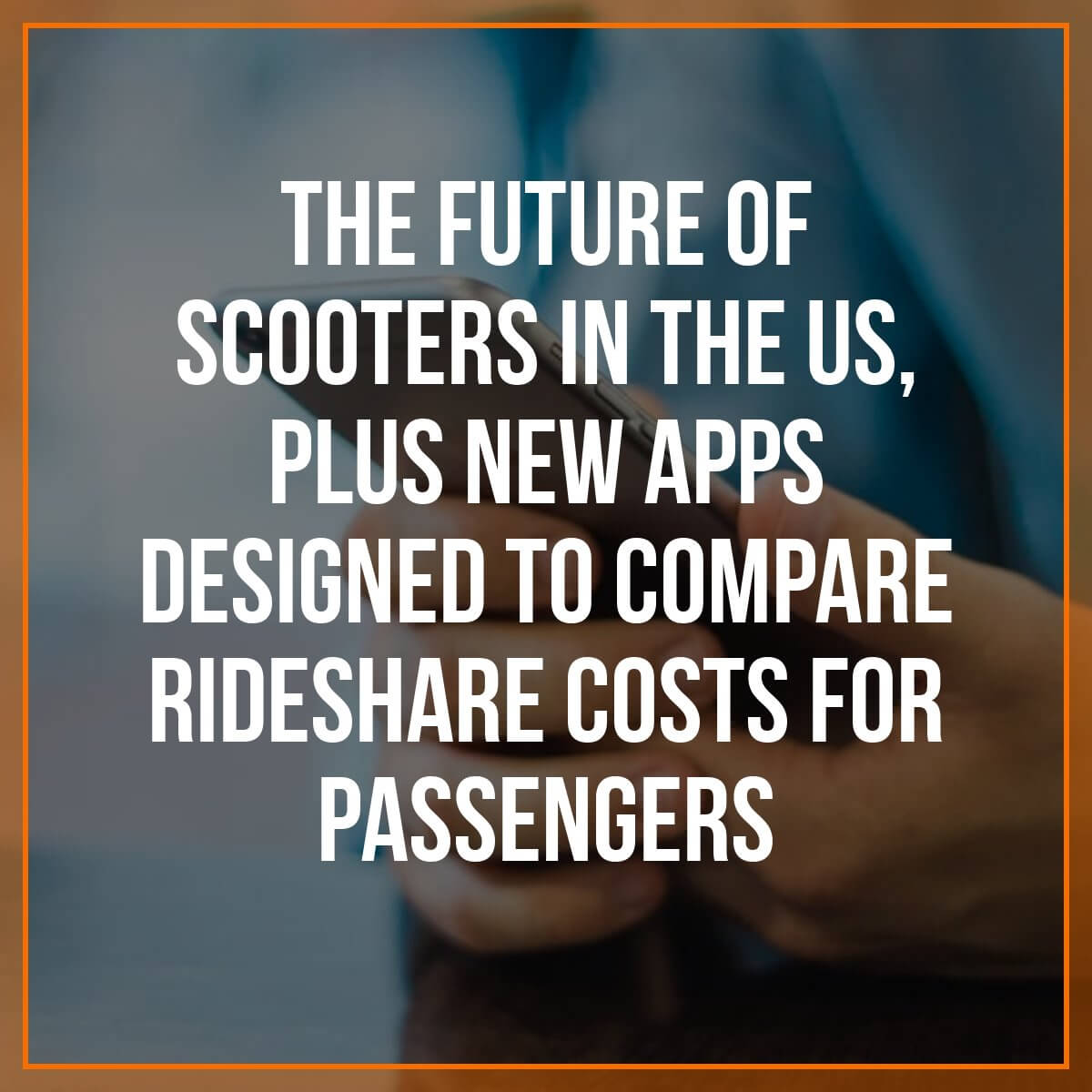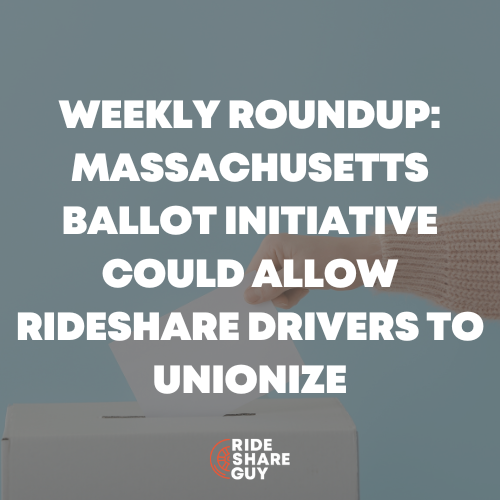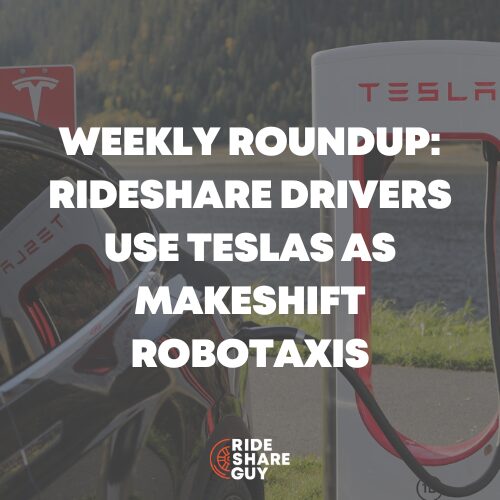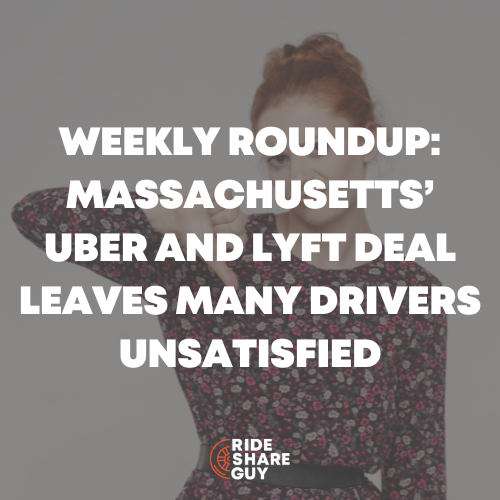Join us for our July YouTube live on Tuesday July 17 at 5pm PT! You can subscribe to our Youtube channel here and be sure to turn on notifications (instructions here) so you know when we go live.
In this round up, Sidecar co-founder and CEO predicts a “war” among the scooters companies – do you agree or do you think there’s room for multiple scooter (and bike) companies? Senior RSG contributor John Ince covers that story plus Europe’s troubles for Uber and new apps designed to help passengers out.

The Scooter Wars will be a bloodbath — and Uber will win [Recode]
Sum and Substance: Who is going to win the Scooter Wars? Startups like Bird, Lime and Spin have invaded dozens of U.S. cities with their tech-savvy scooter fleets in the last few months. Investors are pouring hundreds of millions into the scooter companies with the hope that the best-capitalized scooter company will win. But as the prior Rideshare Wars demonstrated, money alone is not enough.
For all the attention and money that Bird, Lime and Spin have raised, they are not going to win the Scooter Wars. The Uber of scooters is going to be Uber. Despite not having a single scooter, it is already a dominant incumbent with significant built-in advantages.
I was co-founder and CEO of Sidecar, one of the pioneers of ride-sharing… Sidecar had the first-mover advantage, but Uber ended up being the dominant player in the category by using what are now euphemistically called “aggressive” tactics.
It wasn’t its unlimited capital, although that certainly helped. It was able to leverage its existing dominance of riders using its app for black cars to dominate in ride-sharing. We put up a good fight, but ultimately ended up selling Sidecar’s assets to General Motors in 2016…
So when Uber bought Jump, the bike-sharing startup, it signaled the beginning of the end of Bird and Spin. Why? Because Uber already won the ride-sharing wars and now has a dominant source of demand for mobility solutions…
Scooter chargers are easier to find, because they don’t need licenses, clean cars, or to pass background checks. That means it will be easier for Uber to enter the category. And the complex question of figuring out when and where to deploy scooters is likely the same as when and where to deploy drivers — and this is where Uber has a significant advantage….
A similar motivation animates the desire to create a so-called “multimodal” transportation platform that integrates ride-sharing with access to public transit information and ticketing. Consumers who use scooters or public transit are also consumers who will use ride-sharing.
The Scooter Wars will be a bloodbath. Fundamentally, that’s because the ride-sharing companies already have the most relevant eyeballs — the most users of their app looking for a ride — and because they have the logistics expertise to get supply to the right spot… I wish it weren’t so, but that is the way I see it playing out.
My Take: This is a fascinating opinion piece by someone whose opinion we should pay close attention to, Sunil Paul, the co-founder of Sidecar, the early Uber competitor that pioneered several innovative developments in the app and the industry. Of course, Paul eventually saw the handwriting on the wall and sold Sidecar to GM. So when he predicts that Uber’s leveraging power will be such a decisive factor in the scooter wars, I’m inclined to agree.
What do you think? Who’s going to win the scooter wars? If scooters are in your city, what are the trends you’re seeing?
Uber saved its London business. Europe may be tougher to crack [CNN]
Sum and Substance: Uber has found a way to keep operating in London. But that doesn’t mean it can conquer Europe.
With its London license at risk, Uber convinced a judge last month that it had embarked on a corporate overhaul that will change how it operates in the lucrative market. Criticized in the past for its pugnacious approach to business, Uber has now introduced free insurance for drivers in London and limited their operating hours. It opened a 24/7 customer helpline and promised to start reporting serious incidents to the police…
The reforms will hike Uber’s costs at a time when the regulatory and legal environment in Europe is only becoming more difficult for the company…
Uber had sought to avoid tougher rules by arguing that it is a tech platform that connects passengers and drivers…The added cost of complying with regulations could spell trouble for Uber, which has sold itself to investors on its ability to quickly move into new markets and drive established companies out of business…
After years spent bulldozing its way into markets far from its home in Silicon Valley, Uber has sold its operations in China and Southeast Asia. But it is still fighting for another key market, India. The retrenchment has made European markets, including London, even more vital….
My Take: Uber and Lyft aren’t serving just one market – they’re serving thousands of localized markets and each city in each country has its own specific laws and customs that must be understood and respected.
When Uber first entered London under Travis Kalanick, the previous Uber CEO, they got it all wrong. They acted like a bull in a china shop – and it backfired. Now the softer management approach of DK seems to be working in London, at least. The rest of Europe? Nobody knows at this point.
UBER AND LYFT’S NEVER-ENDING QUEST TO CRUSH PRICE COMPARISON APPS [Wired]
Sum and Substance: As private companies funded by loads of venture capital, Uber and Lyft can still afford to slash prices. But as both companies gear up for initial public offerings in the next year, that time is coming to a close.
For nearly as long as there have been ride-sharing services like Uber and Lyft, there have been apps that help riders compare fares and travel times. These aggregator apps allow riders to survey all the services in an area and check prices and wait times—an efficient version of what many do already. There are always fresh versions of these apps popping up. The newest one, Bellhop, officially launched in New York this week.
Bellhop allows prospective riders to compare 17 services offered by four companies—Uber, Lyft, Juno, and Curb—in New York, with plans to add more services and expand to more cities soon. “There are too many ride-sharing apps and you don’t have transparency to make decisions,” CEO and cofounder Payam Safa told me—and he’s right. Pull Bellhop up on a Tuesday morning in July, and it will tell you that the cheapest way to get to the New York public library from my home on the Upper West Side is Lyft’s carpool product. The fastest is Juno, as there’s a car just one minute away.
Figuring that out on my own would take minutes of toggling back and forth between ride-share apps (and likely drumming up my fare in the meantime). With Bellhop, those calculations took less than a minute.
Bellhop is just the most recent service to try and forge this problem into a business opportunity. Whipster, which was started by a Florida IT consultant and aggregates bikeshares and public transportation options as well as ride shares, launched officially last February.
The oldest and most established is the Boston-based team behind RideGuru, which began as a taxi fare finder in 2006, three years before Uber launched…
My Take: The companies talk about transparency – but they draw the line at price transparency. Price comparison apps are the enemy – at least in the minds of the execs of the rideshare companies. That makes it difficult for startups like RideGuru, and Bellhop – even though they’re undeniably providing a valuable public service.
Readers, what do you think of this week’s roundup?
-John @ RSG





